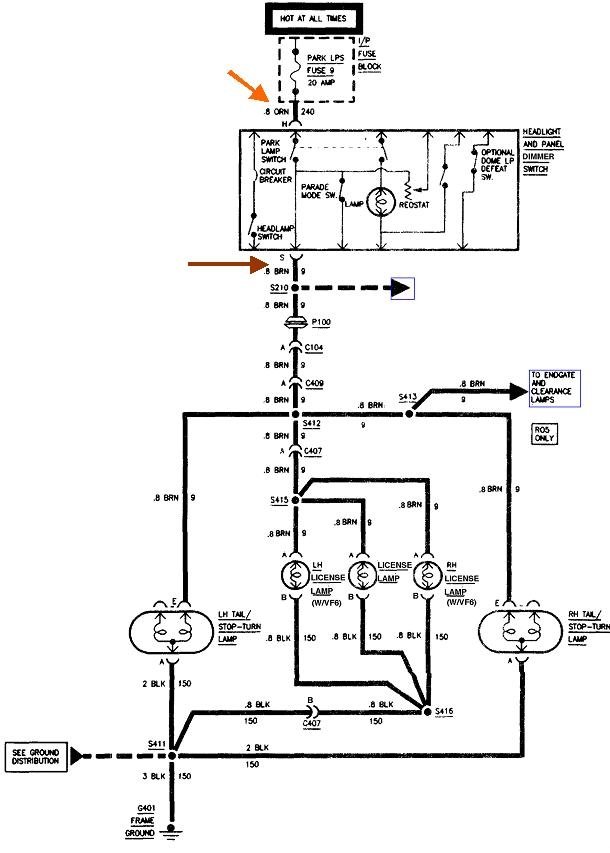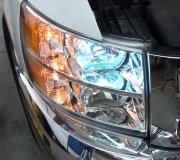First of all, you performed the repair perfectly. The overheated wires have to be cut back at least a good 4" because solder will not adhere to that hardened part. The switch also must be replaced because this part of the damage was caused by overheated internal contacts or overheated terminals, and if either one is not replaced, those less-than-perfect connections will overheat again and transmit that heat to the other one, resulting in a repeat failure.
Now we have to figure out why the fuse is blowing. The easiest way to do that is to remove the fuse and replace it with a 12-volt light bulb. For this relatively low-current circuit, a brake light bulb will work well. Plug a pair of universal crimp-type spade terminals into the socket in place of the fuse, then use a pair of small jumper wires to connect them to the light bulb. The bulb will allow the circuit to be energized, but it will limit current to a safe one amp. Now, when the circuit is turned on and the short is present, the bulb will be full brightness. They get hot so don't let it contact the carpet or plastic door panels. I usually hang it over the rear-view mirror so I can see it from behind the vehicle.
Move things around and disconnect various plugs to see what makes the short go away. When it does, the bulb will get dim, and you might see the truck's tail lights start to glow dimly. They won't be full brightness because the test bulb is using up some of the 12 volts.
One of the most common things I used to see at the dealership was a shorted trailer harness. On relatively new vehicles that had an aftermarket harness installed by U-Haul, this usually occurred within a year of that installation. Their plugs had three red LEDs to show which circuit was turned on, to make wiring the trailer easier. Those LEDs would short, then you'd have a short between two circuits. If the ground circuit was one of them, you'd have blowing fuses. If the short was between, say the tail lights and the left turn signal, you'd have both circuits lighting up when only one was turned on.
The second common problem occurred mostly on minivans because they sit lower to the ground. People would wrap the trailer harness around the hitch, then those wires would get torn up from rubbing on the ground. This was common enough that it was the first thing we looked for.
Also look for a trailer harness that was spliced in with Scotch-Lock connectors. Those do not seal out moisture and must never be used on the outside of a vehicle. When you cut them off, you'll find the original wire is dark brown and corroded, often for a couple of feet in both directions. All of that corroded part must be cut away. If those connections overheat, the wires' insulation can melt and allow two or more wires to touch.
Given the age of the truck, look for license plate lamp wires with hardened insulation that has cracked off, exposing the wire. If the truck has a custom exhaust setup, look for anyplace the wire harness fell down onto hot pipes.
You may need to take things apart too. I ran into the fuse blowing intermittently on a full-size van when they bounced over big bumps in the road. The short would also occur when pressing on the left rear tail light lens. Someone had gone behind it to splice in the trailer harness, then when they put it back together, one of the lens mounting screws caught a wire and cut it. I found that one by banging on the van with a rubber hammer.
If you can't find the location of the short, try moving a small compass along the wire harness where it is attached to the frame. The needle will react to the magnetic field that is always set up around a wire that has current flowing through it. If you work toward the back and reach a spot where the needle doesn't move, you are past the short and no current is flowing in that part of the wire. Sometimes the one amp the current is limited to by the test bulb is too small to make the compass trick work. In that case, substitute the brake light bulb for a 9004 or 9007, or similar head light bulb. Those can allow five or six amps to flow, which is still low enough to protect the rest of the wires, but it will create a much stronger magnetic field around the wire.
SPONSORED LINKS
Sunday, February 17th, 2019 AT 6:55 PM




